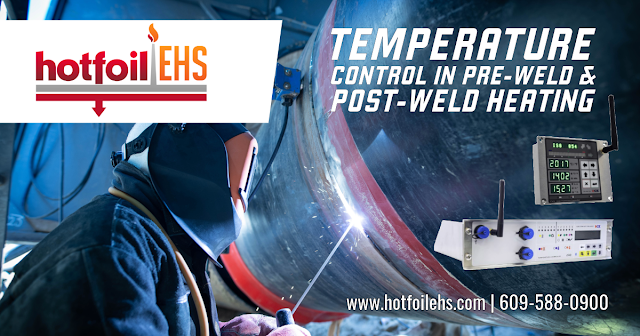In the welding world, ensuring the final product's quality and strength requires more than just skilled welders and advanced equipment. One critical aspect that welders and fabricators must pay close attention to is part temperature control, particularly during the pre-weld and post-weld heating processes. This article will explore the importance of maintaining proper part temperature and its impact on the welding process.
Pre-Weld Heating: Setting the Stage for Success
Before welders even strike an arc, they must consider the temperature of the base metal. Pre-weld heating involves raising the temperature of the workpiece to a specific range, depending on factors such as the material type, thickness, and the welding process employed. This step is crucial for several reasons:
1. Reduces Hydrogen Cracking: Pre-weld heating helps reduce the risk of hydrogen cracking, a common issue when hydrogen atoms become trapped in the weld metal during the cooling process. By preheating the base metal, welders can minimize the temperature gradient between the weld and the surrounding area, allowing hydrogen to diffuse out more quickly.
2. Improves Weld Penetration: Preheating the workpiece lowers its thermal conductivity, which allows the welding heat to penetrate deeper into the joint. This improved penetration results in a stronger, more uniform weld with fewer defects.
3. Reduces Residual Stresses: As welders heat and cool the metal during welding, residual stresses can develop within the material. Preheating helps minimize these stresses by reducing the temperature difference between the weld and the base metal, promoting a more gradual cooling process.
Post-Weld Heating: Ensuring Long-Term Stability
Once welders complete the welding process, their job must still be finished. Post-weld heating, also known as stress relief heat treatment, is essential in maintaining the welded component's long-term integrity. Here's why:
1. Relieves Residual Stresses: Welding can introduce residual stresses into the material. Post-weld heating helps relieve these stresses by allowing the molecules within the metal to rearrange themselves, reducing the internal tension and preventing potential distortion or cracking.
2. Improves Mechanical Properties: Subjecting the welded component to a controlled post-weld heat treatment can enhance its mechanical properties, such as toughness and ductility. This improvement is significant for components that will face demanding operating conditions or heavy loads.
3. Increases Corrosion Resistance: In some cases, post-weld heating can also boost the corrosion resistance of the welded joint. Allowing the formation of a more uniform and stable microstructure helps prevent localized corrosion and extends the component's service life.
Implementing Effective Temperature Control Measures
To reap the benefits of pre-weld and post-weld heating, welders must implement accurate and reliable temperature control measures. This implementation involves using high-quality heating equipment, such as ceramic heaters or induction coils, and precise temperature monitoring devices, such as thermocouples or infrared thermometers.
Additionally, welders must follow established guidelines and procedures for the specific materials and welding processes they are working with. Industry standards, such as those set by the American Welding Society (AWS) or the American Society of Mechanical Engineers (ASME), provide detailed recommendations for pre-weld and post-weld heating temperatures and durations.
Conclusion
Part temperature control, through pre-weld and post-weld heating, plays a vital role in ensuring the quality, strength, and longevity of welded components. By understanding the importance of these processes and implementing effective temperature control measures, welders and fabricators can produce welds that meet the highest performance and reliability standards. As the welding industry continues to evolve, mastering the art of temperature control will remain a critical skill for professionals in this field.
https://hotfoilehs.com
609-588-0900
